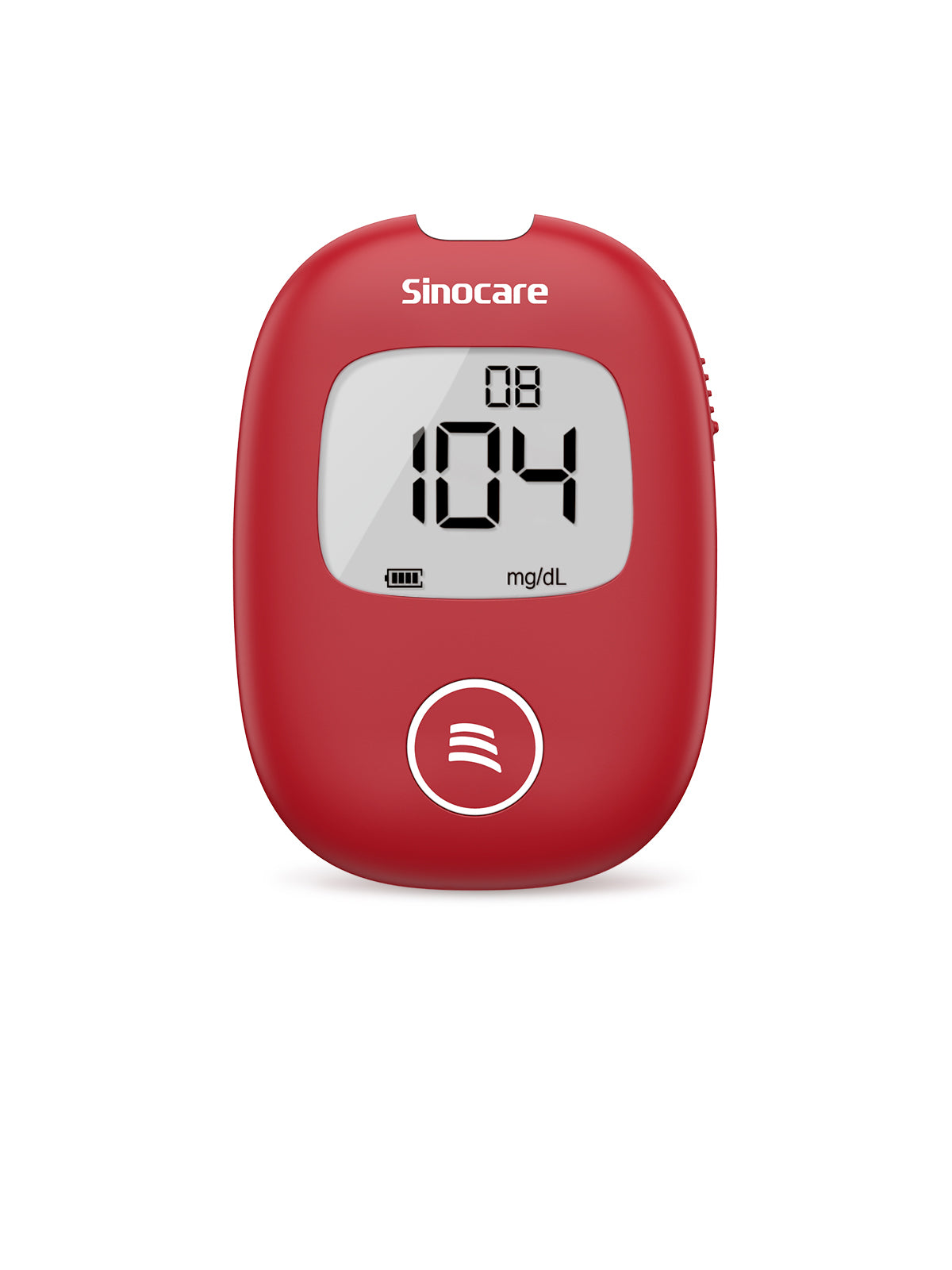Diabetes is closely associated with pancreatic cancer.
New-onset diabetes is surprisingly correlated with pancreatic cancer. Diabetes mellitus is one of the most common chronic diseases. Pancreatic cancer is the 12th most common cancer and is the 7th leading cause of cancer deaths worldwide.[1] Briefly speaking, patients with hyperglycemia are more likely to develop pancreatic cancer and vice versa. In fact, both the 2 diseases originate from the same source - the pancreas.
Diabetes is caused by a problem with pancreatic endocrine islet cells, while pancreatic cancer is mostly caused by malignant transformation of the exocrine structure of the pancreas. The incidence rates of pancreatic cancer among diabetics are increasing significantly. Long-term hyperglycemia can cause chronic irritation to the pancreas, which may lead to pancreatic cells becoming cancerous.
Early pancreatic cancer and new-onset diabetes have some similar symptoms, as cancer cells destroy pancreatic tissue, resulting in a decrease in insulin secretion, leading to a range of diabetes symptoms. In addition, patients with diabetes have the problem of disordered immune function regulation. Because of impaired immune function and weakened immune surveillance, patients are prone to pancreatic cancer.
Even though diabetics are at a high risk of pancreatic cancer, not all diabetes will develop pancreatic cancer, so please do not worry too much.
Long-term diabetes is the key risk factor for pancreatic cancer
The pancreas is located in the upper middle abdomen, adjacent to organs such as the liver, gallbladder, gastro duodenum, and spleen. Early clinical symptoms of pancreatic cancer are easily overlooked.
Pancreatic cancer is a group of malignant tumours mainly originating from the pancreatic ductal epithelium and acinar cells. There are several main features of pancreatic cancer:
- A high degree of malignancy
- Insidious onset
- Difficulty in early diagnosis
- Rapid progress
- Short survival time
- The mortality rate is among the top five among all tumours

Pancreatic cancer is a malignant tumour of the digestive system with an extremely poor prognosis and is also known as the "king of cancer". There're 3 Highs and 4 Lows of pancreatic cancer.
3 Highs:
- high incidence rate
- high recurrence and metastasis rate
- high mortality rate
4 Lows:
- low early diagnosis rate
- low resection rate
- low drug efficacy rate
- low survival rate
The most common clinical features of pancreatic cancer are jaundice, abdominal pain, and weight loss. However, indigestion and loss of appetite are often mistaken for stomach problems, and mild jaundice is often mistaken for hepatitis. About 85% of pancreatic cancer patients have been diagnosed with abnormal fasting blood glucose within 3 years before diagnosis, while 40% of them have been diagnosed with diabetes. Researchers have found that Long-standing type 2 diabetes (T2DM) is a risk factor for pancreatic cancer. [2] The longer the history of diabetes, the higher the incidence of pancreatic cancer.
Signs of pancreatic cancer in diabetics
Sudden diabetes in middle-aged and elderly people. ( Especially those with a short course of the disease, no family history of diabetes, and new-onset diabetes over the age of 55 have a higher incidence of pancreatic cancer within 3 years. )
Unexplained progressive weight loss, or weight loss of more than 10% in a short period of time without obvious symptoms of polyuria, polydipsia, and polyphagia.
Accompanied by non-specific abdominal pain, low back pain (relief by curling the body forward), loss of appetite, yellowing of the skin or sclera, itching and other symptoms, and a family history of pancreatic cancer.
Sudden aggravation of diabetes symptoms such as thirst, polyuria, and weight loss.
In the case of a reasonable diet and normal use of medicines, blood sugar still appears to fluctuate.
Those with good blood sugar control have unexplained hyperglycemia that is difficult to control. Treatment with insulin and hypoglycemic drugs often has little effect.
No family history of diabetes, no obesity and no metabolic syndrome.
Tumour markers CA19-9 and CEA are often abnormal.
Ways to prevent diabetes and pancreatic cancer

Cut off the source of pancreatic cancer
Long-term consumption of high-fat, high-protein red meat (such as pork, beef, and mutton), high-sugar foods, and drinking coffee will increase the burden on the pancreas, which will lead to proliferation, degeneration and canceration of corresponding pancreatic cells. Diabetic patients should eat less high-fat, high-oil, high-salt foods. We advocate healthy eating, physical activity, weight control, and quitting smoking and drinking.
Early diagnosis
When there are suspicious symptoms of pancreatic cancer, blood should be drawn to the hospital to check tumour markers, such as CA199, CA125, CEA, etc., combined with imaging examinations, such as abdominal ultrasound, abdominal contrast-enhanced CT, MRI, etc., if necessary, PET-CT examination can be performed.
Early screening of cancer indicators: The incidence of cancer has increased significantly in people over 40 years old, especially in people with diabetes. Therefore, for diabetic patients over the age of 40, in addition to routine examinations, tumour markers should also be checked for cancer screening.
Standardize the treatment of diabetes
For patients with insulin resistance, the body's sensitivity to insulin should be improved as much as possible, such as weight loss, exercise, etc.; metformin therapy should be the first choice for drug therapy (metformin is associated with lower cancer risk). Studies have shown that standardized treatment of diabetes can not only reduce the risk of pancreatic cancer in diabetic patients but also improve the long-term survival of pancreatic cancer patients with diabetes. All in all, early intervention for diabetes and early blood sugar control are the most effective measures to prevent malignant tumours in diabetic patients.
See Your endocrinologist if necessary
In addition, it needs to be added that the situation of low blood sugar may indicate the development of another specific tumour of the pancreas - islet cell tumour. Although islet cell tumour is a benign tumour, it can lead to the abnormally large secretion of insulin, causing drowsiness, drowsiness, fatigue, anaemia or weight loss. In severe cases, it may even cause fatal symptoms of hypoglycemia such as sudden syncope, convulsions or coma. This situation also needs to be taken care of. If this happens, the patient needs to see an endocrinologist as soon as possible.
References
[1] Bursics A. A hasnyálmirigyrák sebészi kezelése [Surgery of pancreatic cancer]. Magy Onkol. 2021;65(3):257-264.
[2] Andersen DK, Korc M, Petersen GM, et al. Diabetes, Pancreatogenic Diabetes, and Pancreatic Cancer. Diabetes. 2017;66(5):1103-1110. doi:10.2337/db16-1477










Leave a comment
All comments are moderated before being published.
This site is protected by hCaptcha and the hCaptcha Privacy Policy and Terms of Service apply.